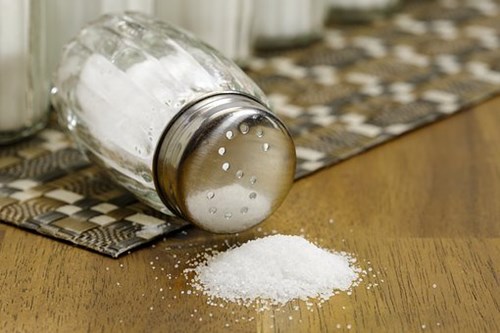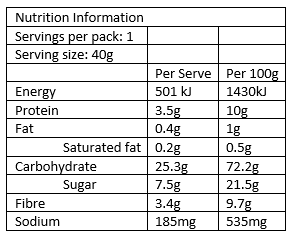Select from the following services

Salt is a chemical compound made of sodium and chloride that our bodies need to maintain fluid balance and blood volume. However, the majority of Australians consume more salt than the recommended amount and this can have a negative effect on our health. World Salt Awareness Week aims to raise awareness of the hidden salt in our every day foods.
Adults only need 1-2 grams of salt (460 – 920 mg sodium) a day to maintain normal function. That’s less than half a teaspoon. The National Health and Medical Research Council (NHMRC) recommends a maximum daily intake for adults of 5 grams of salt (2,000 mg sodium), however a recent Australian Health Survey Data found that 76% of males and 42% of females over the age of 2 years are exceeding this upper limit.
Having a salt intake above 5 grams a day is associated with an increased risk of high blood pressure (hypertension). The long-term consequences of high blood pressure include kidney disease, heart disease, stroke and stomach cancer. Evidence shows that reducing your intake of sodium can help to reduce your blood pressure and lower your risk of developing additional health complications.
A diet high in salt can also increase your risk of osteoporosis and risk of fractures because a high-salt diet increases the amount of calcium excreted in your urine – and we need calcium to maintain healthy bones.
Foods known to be high in salt include any processed or packaged foods like potato chips, pretzels, tortilla chips and take-away foods. However, few people realise that many common foods are surprisingly high in salt, including:
Because of consumer interest, food manufacturing companies are becoming increasingly conscious of what goes into their products and often try to disguise the salt. To make sure you know what you are eating, it’s a good idea to read the ingredients list and Nutrition Information Panel to check for the salt content. But it may not always be obvious, as salt can also be listed as:
One of the most effective ways to reduce your salt intake is to avoid adding it to your meal or cooking. You can also reduce your salt intake by:
So when you are shopping, be aware of how much salt is in the products you buy by checking the ingredients list and Nutrition Information Panel for salt content. Sodium/salt information sodium (salt) will be displayed per serve and per 100 grams. Aim for 120 mg or less per 100 grams. Limit foods with more than 400 mg per 100 grams.

For more information, read the following story on Healthy Shopping Helpers.
A youth mental health initiative developed with students during Victoria’s lockdowns, is hoped to help reduce the stigma surrounding mental health issues and encourage teens to seek help early.
Read MoreOur Health Promotion team is supporting early learning centers through the Achievement Program, an initiative that helps services create a healthier environment for their students, staff and families.
Read MoreThis Children’s Week, we asked our paediatric team to share some of their favourite activities for kids that embrace the importance of play for a healthy lifestyle.
Read More
Speech pathologists provide assessment and management of communication, swallowing and feeding difficulties.
Read More
We have been offering safe and quality door-to-door transport options to our community since 1975.
Read More
We provide Occupational Therapy to help children, adults and those experiencing mental health issues, to achieve their full potential.
Read MoreSelect from the following services